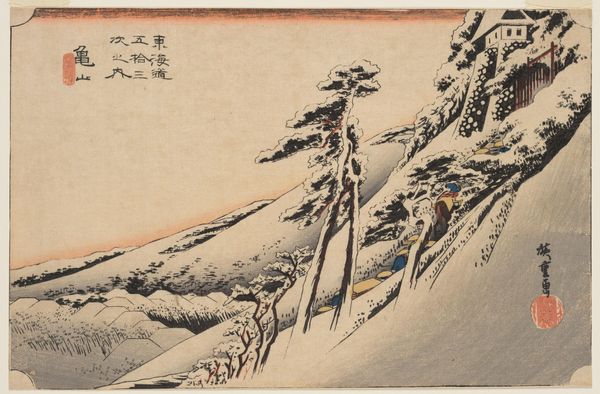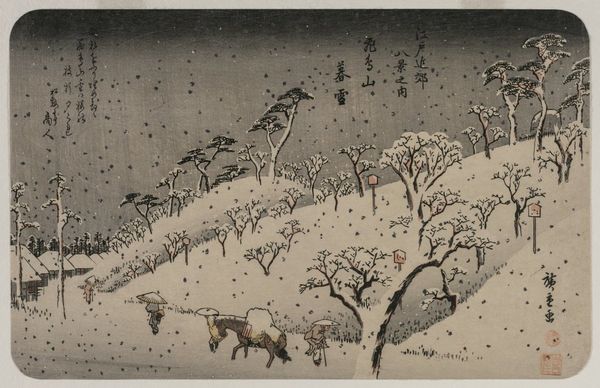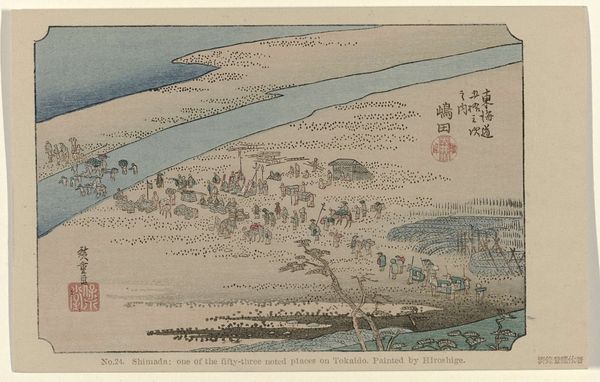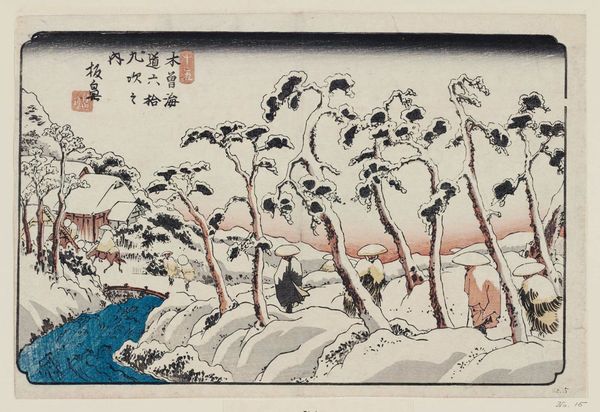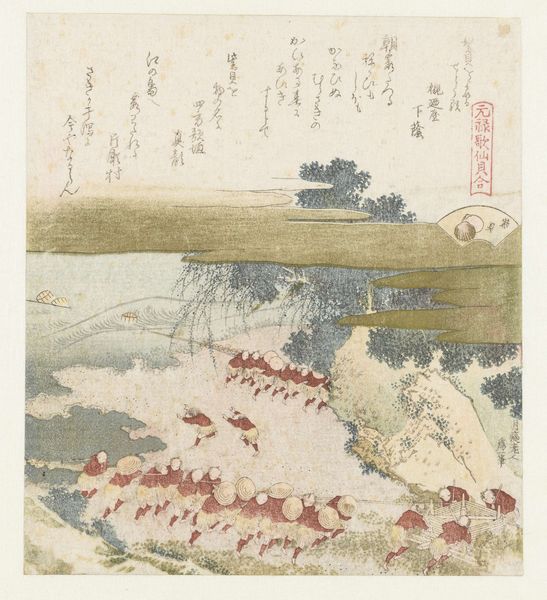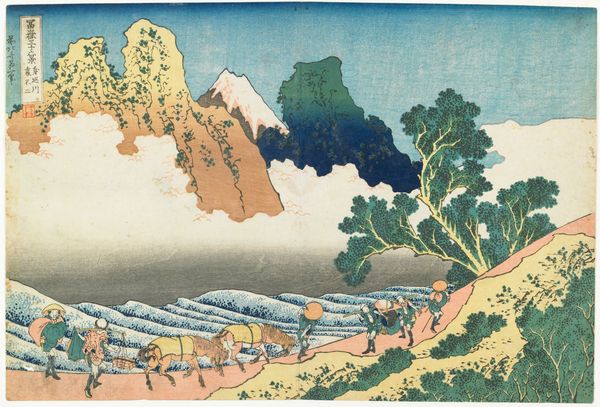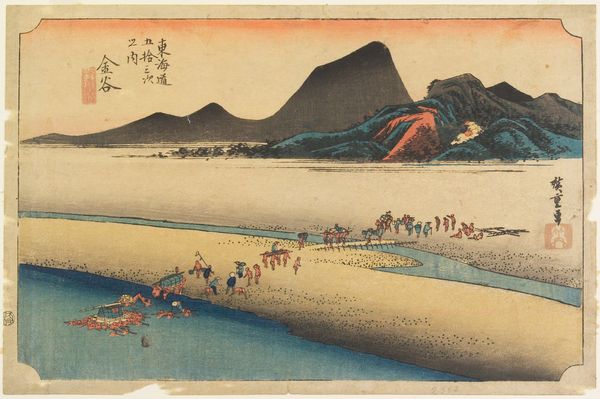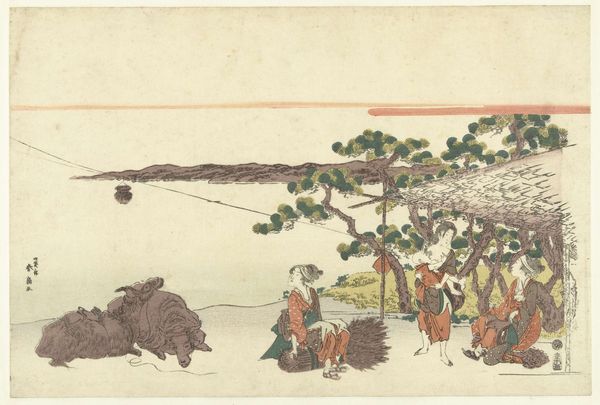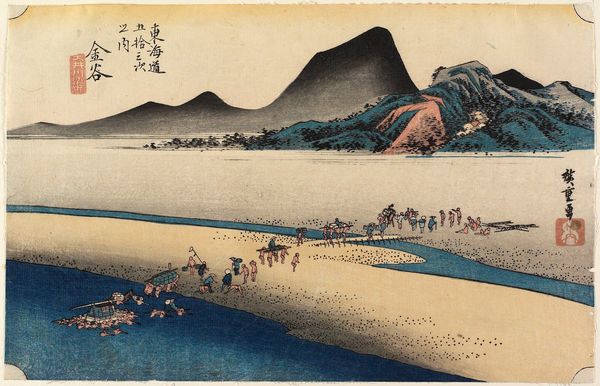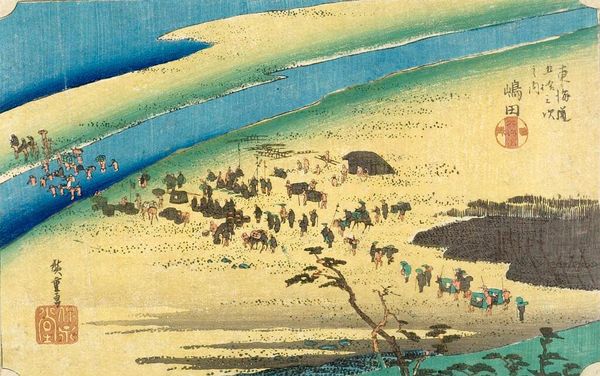
painting, print, woodblock-print
#
ink painting
#
painting
# print
#
asian-art
#
landscape
#
ukiyo-e
#
woodblock-print
Dimensions: height 228 mm, width 348 mm
Copyright: Rijks Museum: Open Domain
Curator: This artwork is a woodblock print by Utagawa Hiroshige I, dating from 1828 to 1835, titled "De Suruga oever van de Oi rivier in Shimada." It's currently held in the collection of the Rijksmuseum. Editor: My first impression is of organized chaos! All those tiny figures, the broad sweep of the river… there’s a real energy to it, despite the overall stillness. Like a carefully orchestrated ballet of everyday life. Curator: Absolutely. Utagawa Hiroshige excelled at capturing the vibrancy of Japanese landscapes and daily life. Here, we see the Oi River and a bustling riverbank teeming with activity, reflecting the ukiyo-e tradition of portraying "pictures of the floating world." Editor: I’m drawn to the river itself. It kind of bisects the composition. And all those little people trying to cross. Makes you think about journeys, transitions... physical, but also maybe metaphorical. Curator: Indeed. Rivers in art are potent symbols of the passage of time, of journeys both literal and spiritual. Notice how the composition is almost divided into layers? The water, the busy shore, and that subtle hint of the opposite bank... it pulls you in, doesn’t it? Editor: It really does. And there's a sense of communal experience, you know? Everyone’s heading somewhere together, sharing this space, sharing this moment. Are those horses or oxen pulling the carts? There's such great movement in what appears to be static, frozen landscape. Curator: Animals were indeed vital to the transport and trade routes of that period. Their presence highlights humanity’s inter-dependence on the natural world and on one another for sustenance. I am also fascinated by the contrast of dark pine tree set against that soft-coloured sand. A harbinger for the new age of art it appears that Hiroshige and others ushered in with woodblock print media in the 19th Century. Editor: Thinking about it, there’s a sense of impermanence in it too. Like this whole scene is fleeting. But it's preserved in this amazing medium. Almost as if a haiku poem materialized in print, for others to discover! Curator: It's like a cultural memory frozen for all time. This "floating world," both fragile and persistent. I never fail to see that intersection, it shows us our origins while heralding our journey forwards. Editor: Makes you think about all the stories that little piece of paper could tell... Every little person has a unique trajectory, that makes for some intriguing stories for anyone, even now, who beholds this image!
Comments
No comments
Be the first to comment and join the conversation on the ultimate creative platform.
